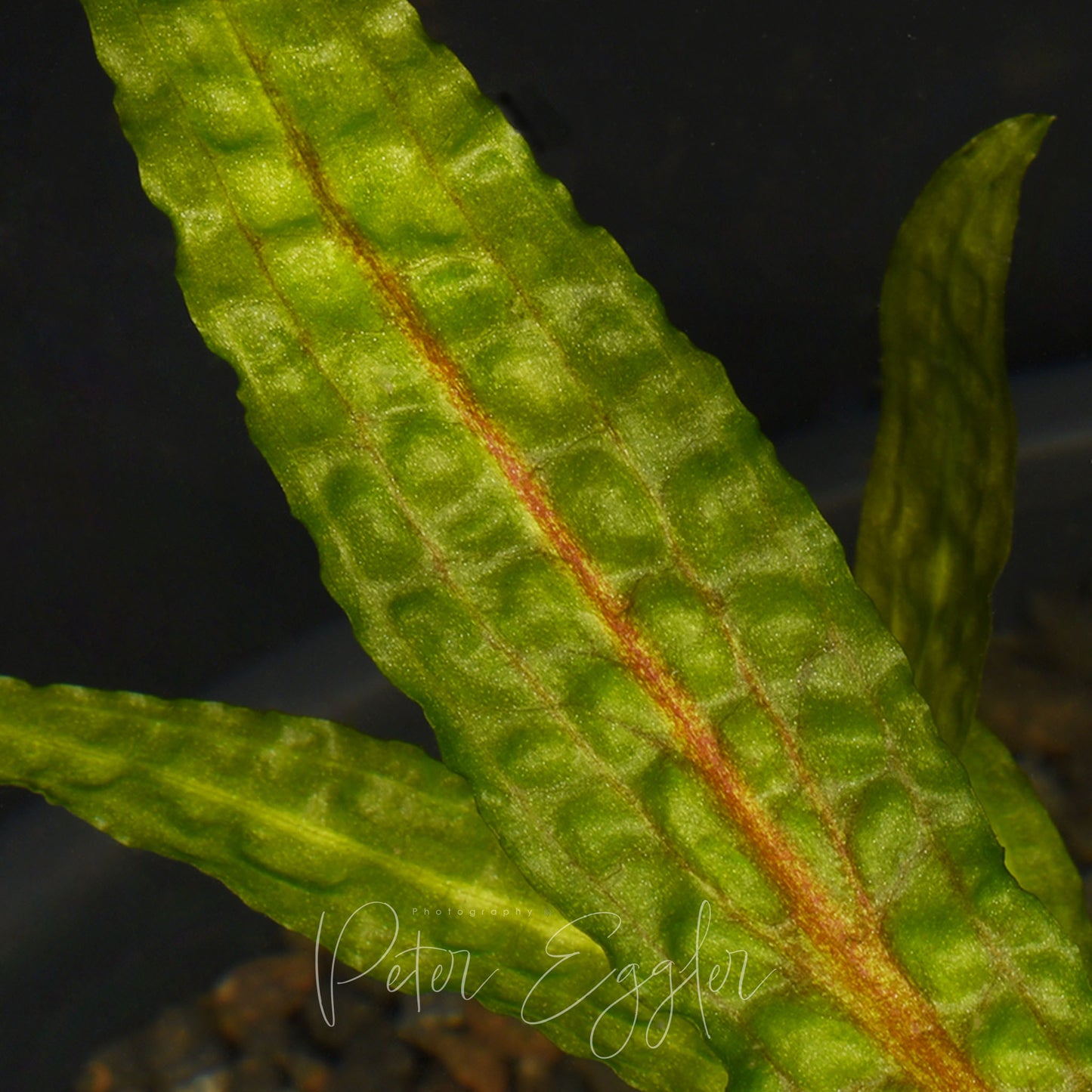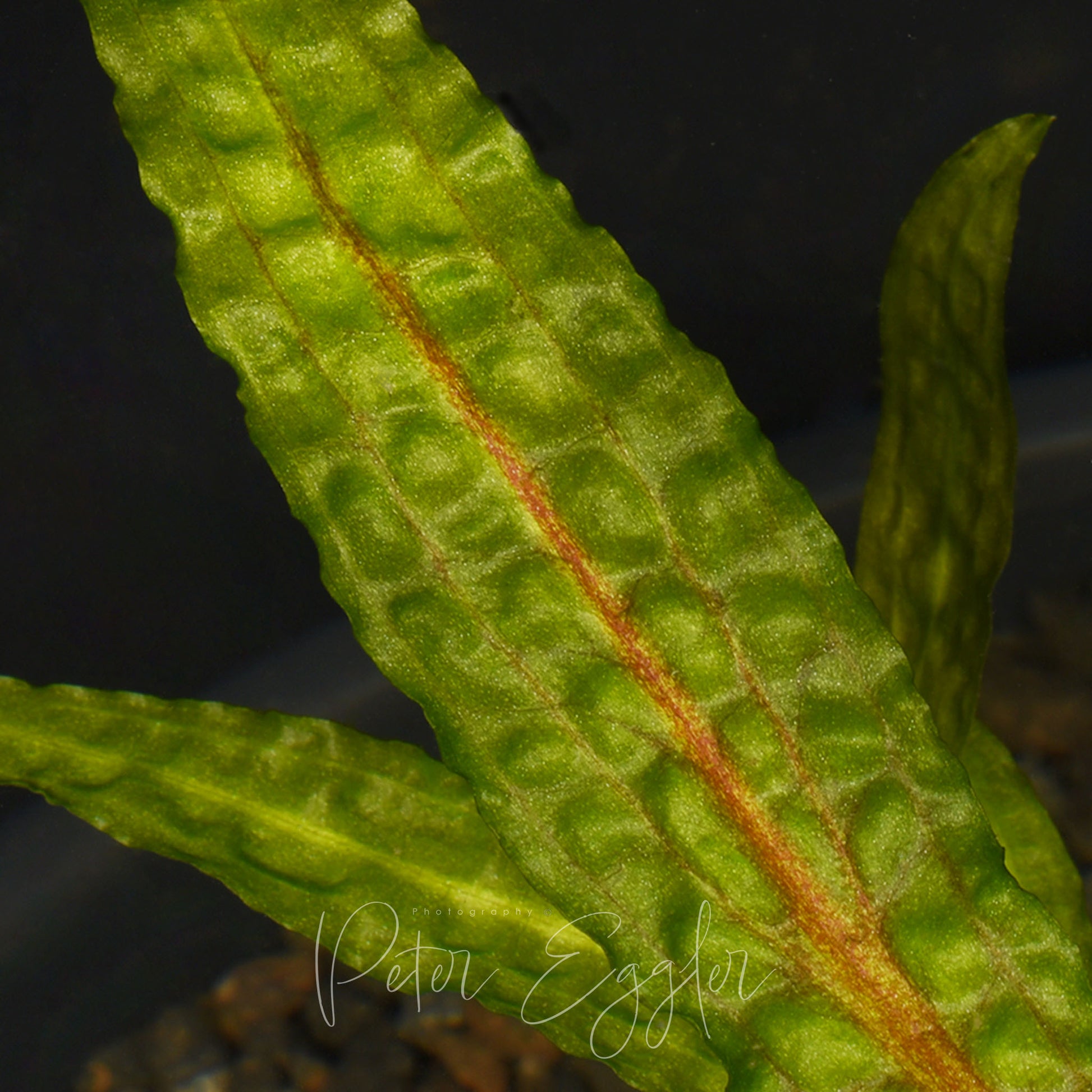Cryptocoryne aponogetifolia
Cryptocoryne aponogetifolia
Low stock: 1 left
Plant Size/Portion Size:
Plant Size/Portion Size:
Couldn't load pickup availability
Plant Name: Cryptocoryne aponogetifolia
Tankquility Catalogue #: TQ-01355
Synonyms/Trade Names:
Original Plant Sourced as: Cryptocoryne aponogetifolia
Plant Family: Araceae
Plant Native to1: Several islands of the Philippines (the crypts pages - http://www.cryptocoryneworld.org/index.php)
Plant Type: Semiaquatic
Image Details2:
Image 1: Cryptocoryne aponogetifolia grown submerse in a greenhouse pond, showing characteristic bullation of the leaf.
General Information and Cultivation3: A large-size crypt, easy to cultivate submerse, with plants growing to more than one meter in height under ideal conditions (the crypts pages). Originating from limestone areas, Cryptocoryne aponogetifolia grows well in hard water conditions, and is adaptable to medium-hardness water provided some limestone is added to the substrate.
Growing this crypt emerse is possible under high humidity/misting and low to moderate light intensity.
According to our source, his original plant came from a well-known South Australian aquatic plant enthusiast by the name of Merv Dunn. Merv imported the plant into Australia in the late 1960’s/early 1970’s (before quarantine regulations became tight).
Identification Notes: Tankquility has been unsuccessful in flowering this clone since it was received in mid-2017. Many years ago, the source of our plant passed a specimen onto a plant enthusiast in north Queensland who subsequently flowered it. The inflorescence was positively identified at the time (around 15 years ago) as belonging to C. aponogetifolia. We await an inflorescence to confirm identification.
Ease of Care: Easy
Plant Size/Portion Size:
Submerse grown plant: Small to medium-size plant with strong root development. Minimum 3 leaves, with leaf blades greater than 150mm.
Further Reading:
1 Distribution is taken from Plants of the World Online (https://powo.science.kew.org/) unless stated otherwise.
2 All images used on the Tankquility website have been taken of plants growing in our nursery.
3 The general and cultural information provided is based on our own experience and observation. If we supply information from others, we have acknowledged the source.
SKU:
View full details
-
Plants can alter their appearance due to seasonal influence, or in response to different environmental conditions or stage of maturity. This phenomenon is known as phenotypic plasticity, and it is especially evident in Aquatic/Semiaquatic plants. Whilst we endeavour to portray a plant accurately, the plant you receive may have been growing under different conditions or be at a different stage of maturity to the one in the image(s) provided.
How we package your plants...
-
Aquatic/Semiaquatic plants will be shipped bare-rooted and wrapped in damp paper for protection when required.
-
Terrestrial/Epiphytic plants will be shipped bare-rooted and the roots wrapped in damp sphagnum moss for protection when required.

